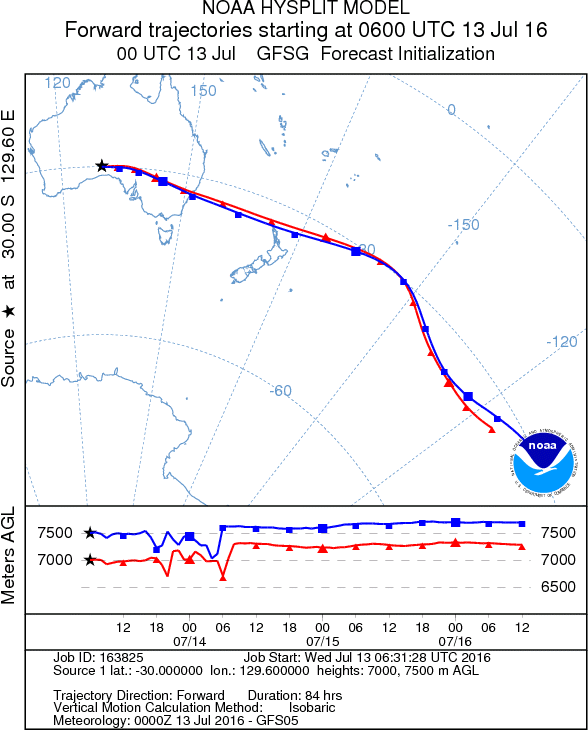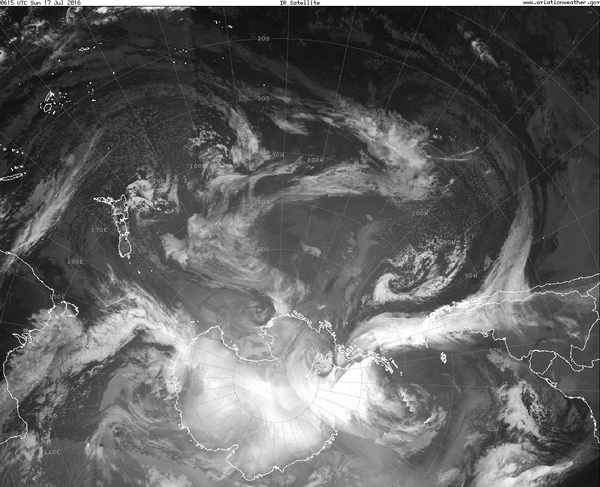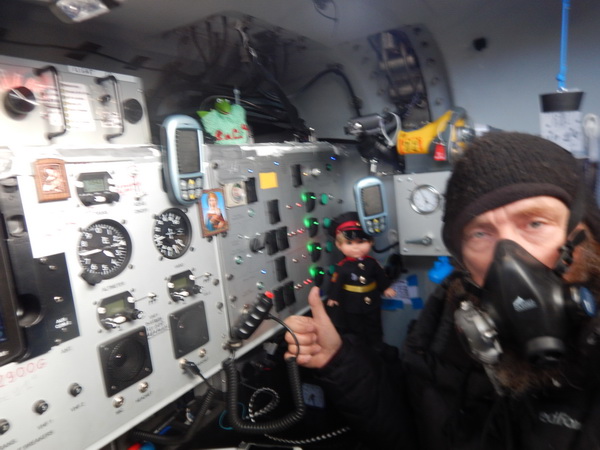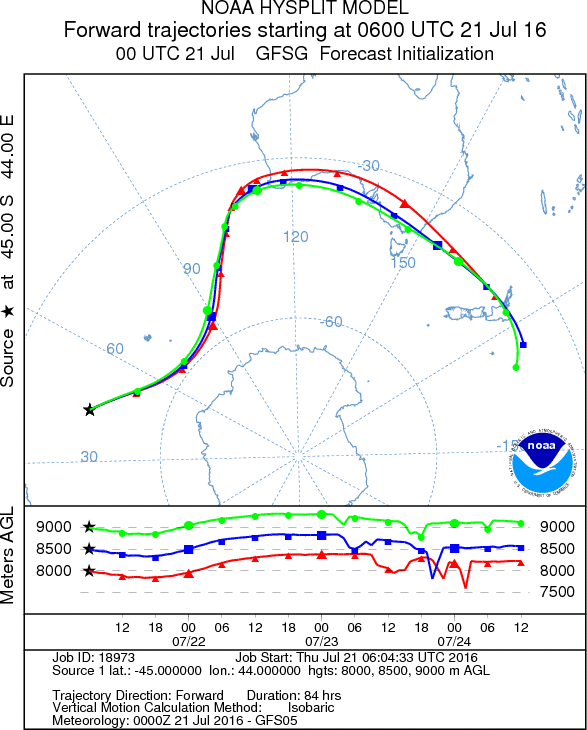Putting a string around the world with a balloon: the Konyukhov RTW flight weather strategy

By David PG Dehenauw. Royal Meteorological Institute of Belgium University of Ghent.
Introduction
The goal of the Fedor Konyukhov RTW flight in July 2016 was to beat the record of 13 days flying around the world in a balloon, held by Steve Fossett since 2002. I was also involved in the Fossett record, and I helped him in the 3 successful RTW flights in Sir Richard Branson’s Virgin Atlantic Global Flyer in 2005 and 2006.
Cameron Balloons, with consent from Fedor Konyukhov, contacted me in 2015 to ask for meteorological support during the flight, probably because I was involved in earlier successful RTW attempts. I accepted as I became aware of the true adventurous spirit of Fedor Konyukhov.
The first thing is of course to identify a decent launch weather window. That was not always easy as a near zero wind speed was required at Northam, Western Australia. A stable boundary layer, preferably with an inversion would be advantageous. Forecasting the details of a boundary layer can be difficult due to a lack of knowledge of the local climatology, so locals had a strong voice in the decision to launch. I always use local input for determining surface weather conditions, as even today’s weather forecast models can have some trouble with boundary layer forecasts on a very local scale.

Launch strategy and initial stages of the flight
After some trial and error, a good weather launch window was found for 12th July at 0 UTC. Of course, none of this is useful if the upper wind pattern upstream is not favorable. But on this date everything came together. I cancelled an earlier opportunity which would have taken Fedor immediately over sea in frontal clouds and precipitation, which would have caused a great deal of stress from the start and might have jeopardized the whole project.
In order to let the pilot get acquainted with the balloon and test some of the equipment aboard, it is preferable to have him fly over land for 48 hours, so he could land in case of some technical problems and weather would not be an issue. The balloon ceiling, at it lowest point in the early part of the flight, could serve as the flight level to keep ballast and all fuel aboard.
Fedor reported some clear air turbulence when getting into the jet stream, leaving Australia. Normally balloons are more subject to convective turbulence instead of clear air turbulence, which is more of an issue for aircraft, but taking into account the height of the balloon (60 meters) and the wind shear involved in the zone near the jet stream, this could not be avoided and did no harm.
I e-mailed my forecasts to the flight control centre several times a day and told them regularly that according to my 4 previous experiences, no RTW flight could be done without some unexpected drama and some bad weather. I was always fully aware forecasts would not be perfect at all times and always had several options in mind, as I did in previous attempts. I also knew at some crucial moments during RTW flights, forecast error margin would be zero.

The Pacific crossing
In the Pacific, after a few days of flying, an active cold front had to be crossed. I tried to find trajectories at different altitudes to cross it at the east active part, where the Cb’s would be less high and less frequent. We succeeded in getting him trough that zone but that did not imply a calm flight. Fedor still had to watch out for Cb’s, would have to be able to spot these and by carefully navigating around these clouds, avoid them. He had to cross the front in daylight of course ! This was another constraint but all went well. Don Cameron woke me up before the frontal crossing because he had doubts about the strategy and ask me to reconsider. I did offer a few other options and we exchanged views about it, but it the end, Don was (more) convinced my proposal could work. It did, but Fedor still had to cope with some Cb’s, towering at heights well above the balloon, but did it brilliantly. At that time, I realized he had the skills to succeed.

The approach to South America would be calmer, in a high pressure ridge but still with a few showers in the vicinity, so vigilance was still needed. Because of the frontal crossing, there was considerable ice accumulation on the balloon, making it heavier and causing more fuel consumption to stay at a certain height, which was still needed to keep enough speed to beat Steve’s time record.
Over the Andes

Mission control asked me several times to work out a strategy to de-ice the balloon in order to climb high enough over the Andes. That is needed to avoid mountain turbulence that could alter the balloon’s track. We also had to be aware of the presence of the Mount Aconcagua (6962 m). So the burners would need to be working in full operational mode. Chilean Air Traffic Control asked to stay away of the Santiago area but this was not easy as we cannot dictate the winds and these were bringing the balloon close to dense air traffic. By running some detailed trajectory calculations, we were able to stay out of it, stay to the north of the Acacongua, at the same time fly in beautiful weather and dry air that allowed the balloon to de-ice without having to drop to very low levels and retarding it. At that time, the 16-17th July, I already put forward a scheme that would allow Fedor to arrive in Australia on the 23rd July, which he did, but not after enduring some epic episodes…
Cumulonimbi in the South Atlantic
Now the South Atlantic was the next challenge. The first part was easy, flying in clear weather. I mailed Mission Control an occluded front would have to be crossed in the middle of the South Atlantic and some Cb’s would be close to us. Now John Wallington, the mission control chief in Northam, woke me up at 0 UTC to ask for immediate advice as Fedor was crossing the front and Cb’s were causing hail and turbulence. After a quick check on his postion and the satellite images, giving me an idea of the speed of the Cb’s and their cloud tops, I advised John to tell Fedor to keep the planned and current altitude because going up would mean lower temperatures in the cabin and going down would slow him down and surrounded by many more Cb’s with tops above balloon height, with hail, turbulence. The current altitude would allow Fedor to escape this rough zone in the fastest way, which he did.
The Indian Ocean challenge
As he neared South African territorial waters, an anticyclone would bring the necessary calm period. Since a couple of days however, I told Mission control the flight from South Africa to Australia would be the most difficult part of the flight, because not only the Indian Ocean jet stream would oblige Fedor to go deep south, but a vigorous low and cold front would have to be crossed and that this was the only route to success. A high pressure area over the Indian Ocean would block a route from Madagascar to Australia (Fossett took advantage of it in 2002 and flew at times at more than 300 km/h !).

I forecasted strong CB’s along the cold front, but to my surprise, some thunderstorms developed also and Fedor was very close to them. He managed to get away from these but this an example of a forecast that was not 100% correct but did not modify the strategy, because the difference between strong showers and a thunderstorm was not influential for altering the strategy. The pilot should avoid these or if not possible, fly high enough to reduce the amount of cloud tops higher than balloon level. At times he flew at more than 10 km ! But it certainly illustrates the need for a good pilot and also for some luck. However, there was absolutely no room for even a small error in the jet stream forecast and picking the right altitude to stay with it and turn back northwards again. Fossett had to go south in the Southern Atlantic in 2002 and I drew experience from that flight to help out poor Fedor, who was in survival mode after a malfunctioning of the heating system, and was nearing the 60th latitude, much deeper to the south than Steve in 2002 … just off Antarctica, where winter reigns in July…

I knew I had to be confident myself before allowing him to go southwards and I was fully aware of the need to reassure the whole team of my confidence in the forecast and to convince them Fedor would go to Australia. However, he would have to fly above 5000-6000 m to stay in the jet stream ! Below that, he would drift towards Antarctica, so I urged the team to be sure the burners would function properly. I also indicated at what time Fedor would turn back northwards and he did. By keeping him at his current altitude of about 8000 m, he accelerated towards Australia in good weather conditions. I told the team if Fedor could hold it to 60 degrees latitude, the weather on his way back would be smooth at flight level. It was.
The landing strategy and the Northam trick
Now I put forward a landing strategy : we had to deal with a cold front near the Australian south west corner so feeder would have to fly above it. The front was not very active, with low cloud tops so we could play somewhat with the heights to try different trajectories. I was in favor of an early morning landing as Fossett did in 2002, in calm conditions, but I got the sense (and the mails !) from Mission Control Fedor and the team were excited about a possible afternoon landing and I suggested this would be possible too, albeit in somewhat windier conditions.

I ran several trajectories and saw a possibility to fly over Northam again ! This was not the only option however, but the trajectories were allowing such a flight if the right flight levels at the right times were chosen. The experience of the pilot is crucial in this. When doing the Fossett flight, the approach towards Australia was difficult because of model error, so he got the advice to make a balloon sounding himself to find the right altitude and the right track, which he did eventually. The model error at that time was a couple of hundred meters of altitude. Now Fedor started to do a sounding too and based on the trajectories, but with an impressive talent, he managed to fly over Northam again, an absolute first in ballooning ! Pilot and meteorologist clearly pulled some extra force in this last leg, but the role of the pilot in doing this cannot be underestimated. I hinted at the possibility following trial and error calculations, but Fedor had to do it, finetuning the forecast where needed.

So he landed safely in Western Australia after only 11 days of flight ! He is a hero and one of the greatest adventurers I have ever worked with. Knowing I assisted my late friend Steve Fossett, to whom I will be eternally grateful, Bertrand Piccard and André Borschberg of Solar Impulse, and Sir Richard Branson, maybe my words may have some weight in the worldwide appreciation of the achievement of Fedor Konyukhov. I had the privilege and distinct honor to guide 5 successive, successful RTW flights: two balloon and three aircraft flights.

Acknowledgements
I want to thank Fedor and Oscar Konyukhov as well as Cameron Balloons for allowing me to participate in this epic flight and for the extraordinary trust invested in me. I am also grateful to the Royal Meteorological Institute of Belgium for giving me the opportunity to, once again, break out of daily routine. The whole meteorological research community, worldwide, made this possible, by improving the atmospheric models. Special thanks to NOAA and NOAA-ARL. They have influenced my vision on forecasting since the beginning of my career and I am much indebted to them. The ECMWF-forecasts were very useful too and they have proven again to be at the top of atmospheric modeling.
Prof. dr. ir. David Dehenauw
Chief Meteorologist / Head of Marine Forecast Section
Weather Presenter VTM / RTL / Vitaya / VRT Radio 2
Royal Meteorological Institute of Belgium (RMI / KMI / IRM)